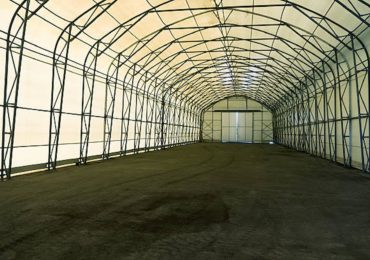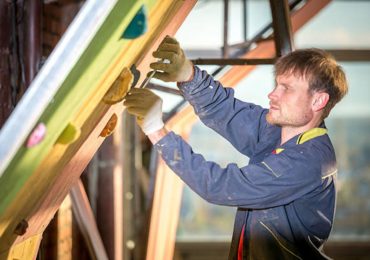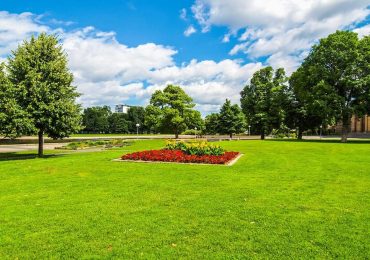In an era where environmental sustainability is paramount, landscape design plays a crucial role in creating spaces that enhance the beauty of our surroundings and contribute positively to the ecosystem. Artemis – Chartered Landscape Architects is at the forefront of this movement, integrating sustainable principles into every aspect of their designs. This article aims to investigate the process of crafting a sustainable landscape utilising Artemis, delving into fundamental principles and practical tips for creating eco-friendly, thriving outdoor spaces.
Understanding Sustainable Landscape Design
Sustainable landscape design goes beyond mere aesthetics; it’s about creating spaces harmonious with nature, minimising environmental impact, and supporting biodiversity. Artemis approaches each project with a deep understanding of the local ecosystem, considering soil health, water conservation, and native plant species. Working closely with clients and stakeholders ensures that every design aligns with sustainability goals while meeting functional and aesthetic requirements.
Incorporating Native Plant Species
One of the hallmarks of Artemis’s approach to sustainable landscape design is the use of native plant species. Native plants are adapted to the local climate and soil conditions, requiring less water, fertiliser, and maintenance than exotic species. By incorporating native plants into their designs, Artemis not only reduces the ecological footprint of the landscape but also creates habitats for local wildlife, promoting biodiversity and ecosystem resilience.
Embracing Water Conservation Techniques
Water is a precious resource, and Artemis employs various techniques to minimise water usage in their landscape designs. From rainwater harvesting systems and permeable paving to drought-tolerant plantings and intelligent irrigation technologies, they ensure that every drop counts. Artemis helps clients reduce their water bills and mitigate the impacts of droughts and water shortages by designing landscapes that capture, store, and efficiently utilise water.
Promoting Sustainable Maintenance Practices
Sustainability doesn’t end with completing a landscape design; it also extends to maintenance practices. Artemis educates clients on sustainable maintenance techniques, such as organic fertilisation, integrated pest management, and proper pruning methods. By prioritising soil health and natural processes, they create landscapes resilient to pests and diseases, reducing the need for harmful chemical inputs. Through ongoing maintenance partnerships, Artemis ensures that its designs continue to thrive for years, serving as sustainability models for future generations.
Integrating Renewable Energy Solutions
Another critical aspect of sustainable landscape design is integrating renewable energy solutions. Artemis explores opportunities to incorporate solar panels, wind turbines, and other renewable energy technologies into their designs, reducing reliance on fossil fuels and lowering carbon emissions. By harnessing the power of nature, these solutions contribute to the landscape’s sustainability and provide long-term cost savings for clients. Whether powering outdoor lighting, irrigation systems, or other amenities, renewable energy solutions are crucial in creating self-sufficient and eco-friendly outdoor spaces.
Creating Habitat Corridors And Green Infrastructure
Artemis recognises the importance of creating habitat corridors and green infrastructure within their landscape designs. By strategically planning interconnected green spaces and wildlife corridors, they help support the movement of species and promote biodiversity across urban and suburban landscapes. Green roofs, living walls, and porous surfaces are integrated into their designs to mimic natural ecosystems, enhance urban biodiversity, and mitigate the urban heat island effect. Artemis creates resilient landscapes that benefit people and wildlife by prioritising green infrastructure and fostering healthier, more sustainable communities.
Engaging Communities And Stakeholders
Sustainable landscape design is a collaborative process that involves engaging communities and stakeholders throughout the project lifecycle. Artemis emphasises the importance of community engagement, seeking input from residents, local organisations, and government agencies to ensure that their designs reflect the needs and aspirations of the community. Artemis builds stakeholder trust and consensus by fostering open communication and collaboration, leading to more successful and sustainable outcomes. From community workshops and design charrettes to public presentations and outreach events, Artemis actively involves the community in the design process, empowering them to take ownership of their outdoor spaces and become stewards of the environment.
Implementing Sustainable Materials And Construction Practices
Artemis prioritises using sustainable materials and construction practices in its landscape designs. It sources materials locally to reduce transportation emissions and support the local economy. Additionally, it selects materials with low embodied energy and environmental impact, such as recycled and reclaimed materials, FSC-certified wood, and permeable paving materials. Artemis chooses durable and environmentally friendly materials to ensure their landscapes have minimal environmental impact throughout their lifecycle.
Designing For Resilience And Adaptation
With climate change posing increasing threats to landscapes worldwide, Artemis designs for resilience and adaptation. They consider extreme weather events, sea-level rise, and changing precipitation patterns in their designs, incorporating resilient planting schemes, erosion control measures, and stormwater management strategies. By designing landscapes that can withstand and adapt to environmental changes, Artemis helps clients future-proof their outdoor spaces and minimise risks associated with climate-related hazards.
Conclusion
Designing a sustainable landscape requires a holistic approach considering environmental, social, and economic factors. With Artemis—Chartered Landscape Architects, clients can trust in a partner who shares their commitment to sustainability and has the expertise to bring eco-friendly outdoor spaces to life. By incorporating native plant species, embracing water conservation techniques, and promoting sustainable maintenance practices, Artemis sets the standard for sustainable landscape design in the industry. Together, we can create landscapes that inspire and delight and contribute to a greener, healthier planet for all.








